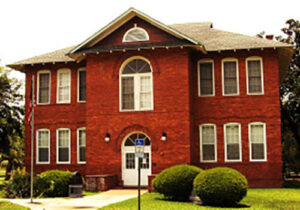
By James C. Sherlock
I have written here multiple times about the terrible and disproportionate effects that school shutdowns are having on poor children in Virginia.
The public school is an enterprise that has no admission standards. We do it that way on purpose, to try to give every American child as much opportunity to learn and develop into a successful citizen as we can. Public schools represent a core value of the American way of life and provide foundational support to our republic.
Virginia Guidelines vs. CDC Guidelines
On June 9, 2020 Governor Ralph Northam announced guidance for a phased approach that allows Virginia schools to slowly resume in-person classes for the coming academic year. There were two sources for the Governor’s guidance, the Virginia Department of Health (VDH) and the Virginia Department of Education (VDOE). Both dropped the ball.
VDH summarized and truncated the published CDC school considerations to slow the spread of COVID-19 to the point that they are at best unhelpful. It is difficult to imagine why they did not just publish the CDC guidelines, but they did not.
That flawed guidance was absorbed into the VDOE reopening guidelines.
One of the core recommendations that originated in VDOE — remote learning for large classes of K-12 students— has been shown in every study to have been ineffective in April and May. An alternative schedule will prove in practice unexecutable.
Many in the school system took the guidelines as directives. They are not.
The VDOE guidance was neither an executive order nor a directive, because, as Clark Mercer, the Governor’s Chief of Staff clarified:
“Each district has flexibility to come up with its own plan that they will submit to the Department of Education. What the state has put out is guidance based on CDC guidelines,” said Mercer. “Some districts may want more distance learning, many will want less — we would expect many districts to be at regular capacity when the school year begins.”
I urge school systems in Virginia to use the CDC source documents cited below in their school reopening decision making.
They have been authored by some of the world’s leading epidemiologists.
Remote Learning
Every study has found that in the past few months K-12 schools have had very little success in teaching large groups of children remotely. Remote learning is much harder, inherently much less successful, and exacerbates the differences in outcomes between those with a lot of support at home and those with less.
Ignoring for a moment the daunting challenges at the teacher end, remote learning in K-12 generally works only for children whose families provide a stable and supportive learning environment, are motivated to learn, undistracted and have access to the tools necessary to do the work.
If school boards require remote learning, they will do so knowing it won’t be effective.
They will also know that remote learning requires new ways to ensure the social and emotional well being of students, new ways of identifying abuse and neglect, and new mental health supports for school staff.
Alternative Schedules
One of the VDOE alternatives for consideration, potential alternative schedules — mixing in-person instruction and remote learning — is a bridge too far.
The wild card uncontrollable by the superintendents is the home situation. Most children have families that make big efforts to support them. Many of the parents and some of the high school kids have to work to make ends meet. Many parents have children in more than one school.
Alternative schedules with partial in-school and partial at-home learning requirements for their children will challenge their daily lives in ways that are have varying impacts, all of which predictably unsettling.
New requirements
Before August, the schools have lots of other things to do.
They must arrange to make up lost work from 2019-20 school year and introduce the new material required for each current grade.
They must also introduce new health and safety procedures, make facility, schedule and transportation accommodations, pay for the new expenses, and develop and communicate all the new arrangements and rules to school principals, teachers, special staff (guidance counselors, nurses, school psychologist, etc.), other workers and to the parents.
They must provide for students with disabilities, vulnerable learners, mental health and psychological supports and school discipline under COVID-19 restrictions.
Then there are the bus schedules and the bus driver schedules.
Mental Health
Principals, teachers, special staff, cafeteria workers, bus drivers and the rest of the workers are proud professionals.
The stress they will be under this fall will be fierce and must be minimized and supported with counseling. Even then some of them will have negative emotional reactions and/or walk away.
The children will suffer the worst. Lack of socialization, lack of contact with friends, too much time on the internet.
We are creating a mental health crisis.
School Boards and Superintendents
The only real choice is binary. Open the schools or leave them closed.
Ignore false options.
Alternative schedules and long-term large group remote learning will not work, and your schools will be pressured to pretend they did to maintain accreditation.
They will be forced to move children up to a grade for which they will be unprepared.
As the Governor’s Chief of Staff said,
“What the state has put out is guidance based on CDC guidelines.”
Open your schools following the actual CDC source documents. The guidelines are clearer, more complete and easier to achieve.
The CDC decision tree for reopening schools can be found here.
The CDC COVID-19 safety in schools guidelines can be found here.
Pay attention to “as feasible” and “if feasible” caveats from the nation’s leading epidemiologists at CDC.
And open the schools.


